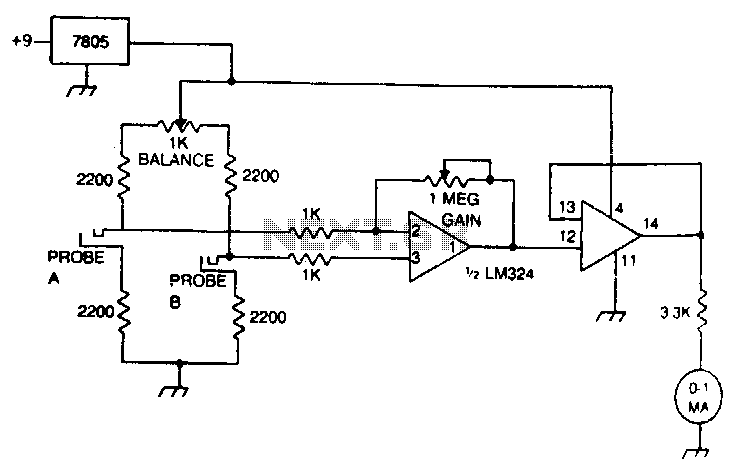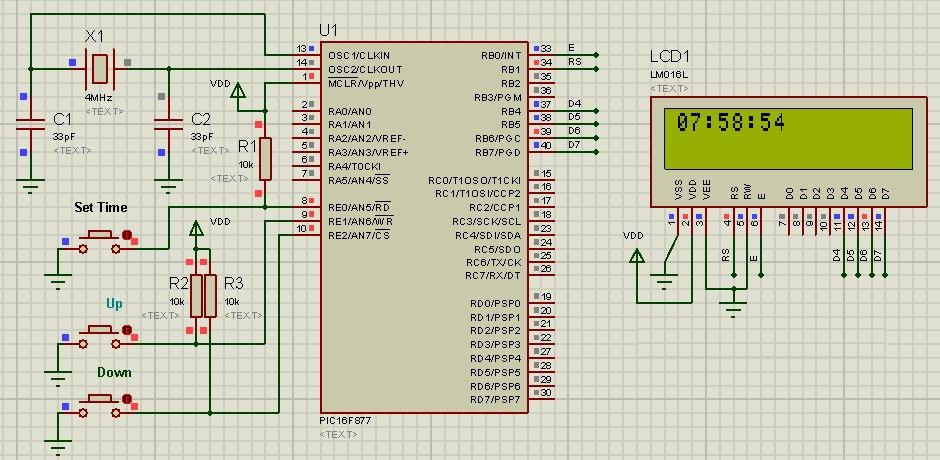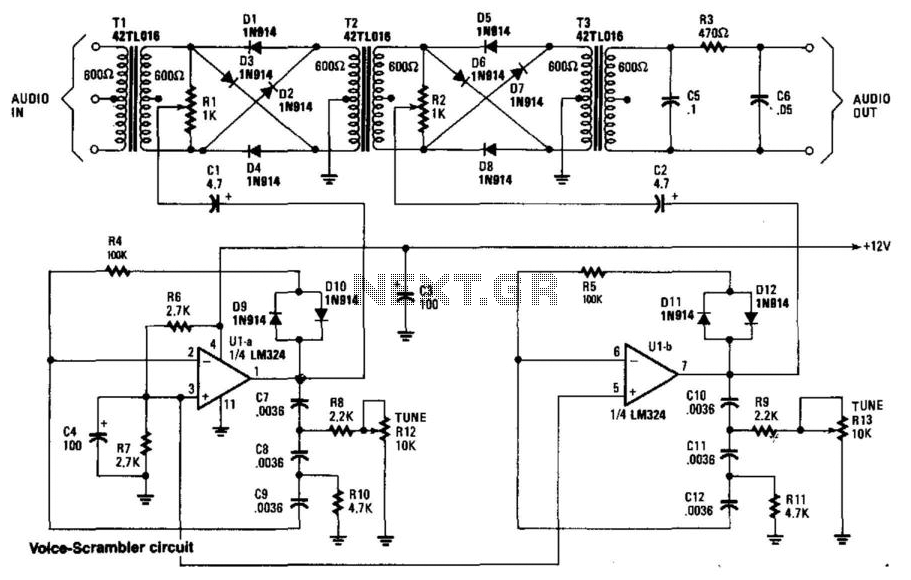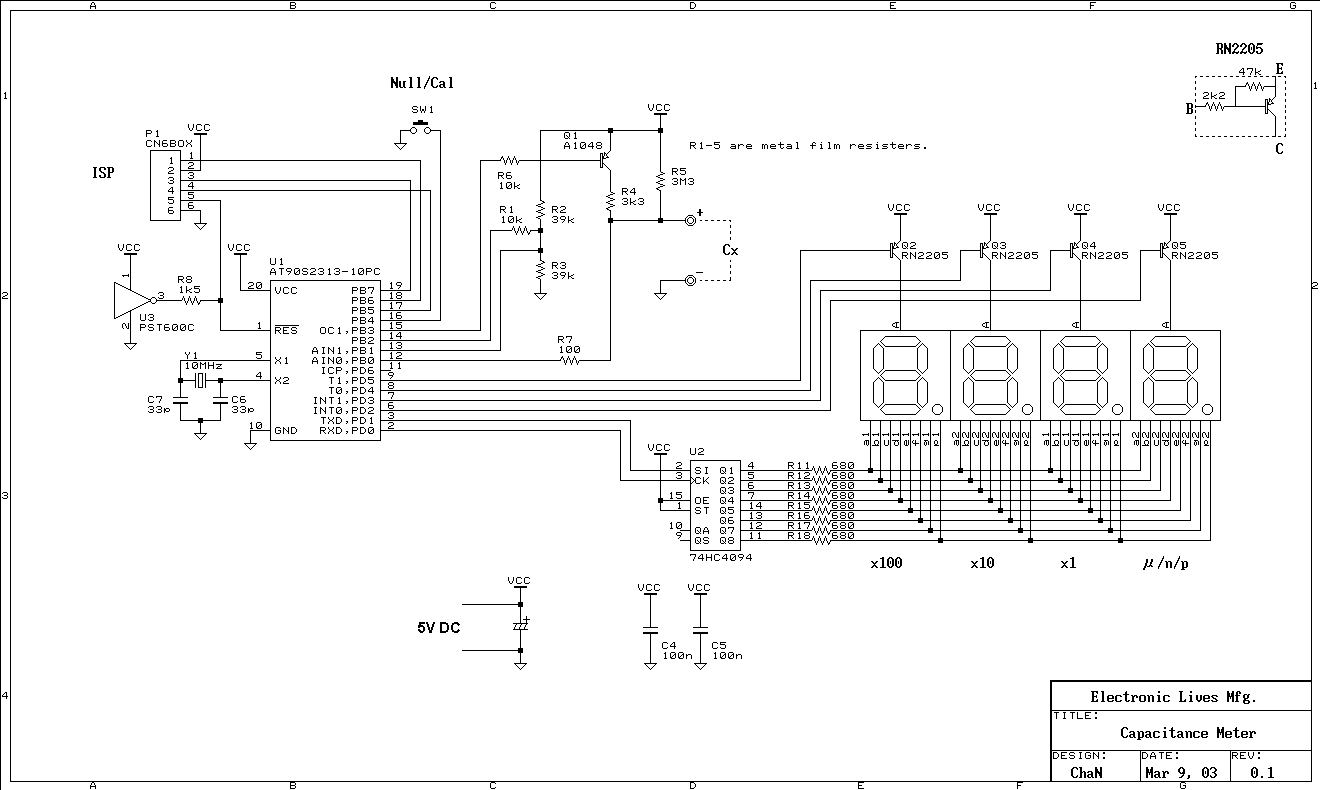
Digital Voice Recorder/Playback (UM5100)

This circuit is based on the UM5100, which can record speech into digital memory and then play it back. The device is designed for use with static RAMs up to 256K bits or with EPROMs or ROMs for playback only. High-quality voice reproduction is achieved, and it is important to note that it reproduces the original speaker's voice, rather than a "computer voice." The bit rate is adjustable from 10 kbps to 28 kbps, with higher quality at faster bit rates. Consequently, the maximum recording length can range from approximately 9 to 26 seconds. To prevent distortion at low frequencies, auxiliary outputs should be utilized, while an internal amplifier enhances voice loudness at high frequencies.
The UM5100 circuit is a versatile device for speech recording and playback, utilizing a combination of static RAM, EPROM, or ROM technologies to store audio data. The core functionality revolves around the ability to capture and reproduce high-fidelity audio, making it suitable for applications that require clear voice playback, such as toys, alarms, or interactive devices.
The circuit can be configured to interface directly with a static RAM chip, which allows for dynamic recording and playback of up to 256K bits of audio data. This flexibility enables the user to choose the appropriate storage medium based on the specific application requirements. When utilizing EPROMs or ROMs, the circuit is limited to playback, which is ideal for applications where the audio content is predetermined and does not require recording capabilities.
The adjustable bit rate feature is a significant advantage, as it allows users to balance between audio quality and memory usage. At lower bit rates, the audio quality may decrease, but the recording duration increases, allowing for longer messages to be stored. Conversely, higher bit rates yield clearer audio reproduction but reduce the maximum recording time.
In terms of audio output, the circuit is designed with auxiliary outputs that can be employed to mitigate distortion at low frequencies. This is particularly important in applications where clarity of speech is paramount. The internal amplifier serves to boost the audio signal, ensuring that the playback volume is sufficient for the intended application, especially in noisy environments or where the device may be at a distance from the listener.
Overall, the UM5100 circuit represents a practical solution for applications requiring voice recording and playback, combining ease of use with high-quality audio reproduction and flexible storage options.This Circuit is based on the UM5100 which can record speech into a digital memory and then play it back. The device is designed to be used directly with static RAM's up to 256K bits, or with EPROM 's or ROM's for playback only.
High quality voice reproduction is possible and note that it is not a "computer voice", it is the original speaker's voice played back. The bit rate is adjustable from 10kbs to 28kbs with higher quality at faster bit rates. Thus the maximum length of recording can be between about 9 and 26 seconds. At low frequencies the auxiliary outputs should be used to avoid distortion, whilst for high frequencies, an internal amplifier intensifies the voice loudness. 🔗 External reference
The UM5100 circuit is a versatile device for speech recording and playback, utilizing a combination of static RAM, EPROM, or ROM technologies to store audio data. The core functionality revolves around the ability to capture and reproduce high-fidelity audio, making it suitable for applications that require clear voice playback, such as toys, alarms, or interactive devices.
The circuit can be configured to interface directly with a static RAM chip, which allows for dynamic recording and playback of up to 256K bits of audio data. This flexibility enables the user to choose the appropriate storage medium based on the specific application requirements. When utilizing EPROMs or ROMs, the circuit is limited to playback, which is ideal for applications where the audio content is predetermined and does not require recording capabilities.
The adjustable bit rate feature is a significant advantage, as it allows users to balance between audio quality and memory usage. At lower bit rates, the audio quality may decrease, but the recording duration increases, allowing for longer messages to be stored. Conversely, higher bit rates yield clearer audio reproduction but reduce the maximum recording time.
In terms of audio output, the circuit is designed with auxiliary outputs that can be employed to mitigate distortion at low frequencies. This is particularly important in applications where clarity of speech is paramount. The internal amplifier serves to boost the audio signal, ensuring that the playback volume is sufficient for the intended application, especially in noisy environments or where the device may be at a distance from the listener.
Overall, the UM5100 circuit represents a practical solution for applications requiring voice recording and playback, combining ease of use with high-quality audio reproduction and flexible storage options.This Circuit is based on the UM5100 which can record speech into a digital memory and then play it back. The device is designed to be used directly with static RAM's up to 256K bits, or with EPROM 's or ROM's for playback only.
High quality voice reproduction is possible and note that it is not a "computer voice", it is the original speaker's voice played back. The bit rate is adjustable from 10kbs to 28kbs with higher quality at faster bit rates. Thus the maximum length of recording can be between about 9 and 26 seconds. At low frequencies the auxiliary outputs should be used to avoid distortion, whilst for high frequencies, an internal amplifier intensifies the voice loudness. 🔗 External reference





